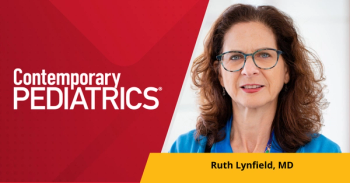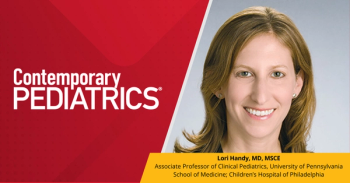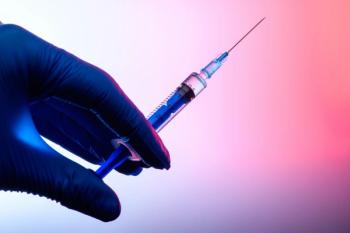
- Consultant for Pediatricians Vol 7 No 9
- Volume 7
- Issue 9
HPV Vaccine: Questions and Controversies
The approval of Gardasil (Merck)-a recombinant vaccine providing protection against human papillomavirus (HPV)-in 2006 sparked instant controversy.1,2 Because HPV infection is a sexually transmitted disease, the use of a vaccine for such a disease brought the following political, medical, and moral questions to the forefront:
The approval of Gardasil (Merck)-a recombinant vaccine providing protection against human papillomavirus (HPV)-in 2006 sparked instant controversy.1,2 Because HPV infection is a sexually transmitted disease, the use of a vaccine for such a disease brought the following political, medical, and moral questions to the forefront:
•Is this vaccine safe, efficacious, and cost-effective?
•Should only girls be vaccinated?
•Will the vaccination of preadolescents increase promiscuity?
•Should this vaccine, as many legislators are suggesting, join the ranks of the mandatory vaccines needed for school entry?
•Are these legislators influenced by drug company lobbyists or moralists?
•Are health care providers supportive of the vaccine?
This review provides the clinician with information to help answer some of these questions and clarifies some of the controversies surrounding the HPV vaccine.
OVERVIEW
More than 6 million persons aged 14 to 44 years are newly infected with HPV annually in the United States; almost 75% of these infections occur among male and female adolescents and young adults aged 15 to 24 years.1,3 More than 25% of American women aged 14 to 59 years are estimated to have HPV at any given time.3-6 More than 100 types of HPV cause infections; a large proportion of these infections resolve on their own without sequelae.7,8 Gardasil protects against 2 of the high-risk types associated with persistent disease that leads to cervical cancer (types 16 and 18), and against 2 of the types that most often cause genital warts (types 6 and 11). In clinical trials, the vaccine was almost 100% effective in preventing infection from these 4 strains of HPV, which cause 70% of cervical cancers and 90% of genital warts.2
The HPV vaccine has been approved for use in girls and young women aged 9 to 26 years.1 The CDC and the Advisory Committee on Immunization Practices currently recommend that 11- to 12-year-old girls routinely receive the HPV vaccine. 1 Administering the vaccine at this age before the initiation of sexual activity is preferable for maximum preventive benefit. The initial dose of the vaccine is followed with boosters at 2 months and 6 months. Vaccination is not limited by previous Papanicolaou test history or history of previous sexual activity.
GIRLS ONLY?
Although the current vaccine recommendations are for girls and women only, boys and men are equally likely to become infected with HPV.9 According to a 2007 study, the cancers associated with HPV infection in men include penile, anal, and certain kinds of oral cancers.9 HPV type 16 has been linked to head and neck cancers in both men and women; these cancers are actually more prevalent in men. Both men and women who report having 6 or more oral-sex partners during their lifetime have been shown to increase their risk of tonsil/tongue cancer 9-fold.9 Researchers are collecting data to determine whether HPV vaccination will show a benefit in reducing these oropharyngeal cancers.
The vaccine has been shown to have an equally strong immune response in both sexes and therefore should confer equal protection in both. In Europe and Australia, boys and men are vaccinated along with girls and women. Studies are also under way to address the issue of whether the inclusion of boys and men in routine vaccination will indirectly protect girls and women by providing herd immunity.
Parental attitudes toward the vaccine may become even more negative if boys are included in the vaccine-eligibility pool. Based on the predictors of intention to vaccinate reported in a recent study from Cincinnati, the major impetus of cancer prevention, while a valid argument in men as well as women, may not resonate as strongly among the male population because of a lack of public recognition of risk.10 Without a compelling belief in personal risk, male patients and their parents may be less likely to agree to voluntarily undergo the 3-shot series.
HOW SAFE IS IT?
Gardasil has a safety profile similar to those of many other childhood vaccines. In the 2 years after its approval, 9749 side effect reports were submitted via the Vaccine Adverse Events Reporting System (VAERS).11 These included 20 deaths subsequent to vaccination; however, the deaths were not proved to be related to the HPV vaccine. The most commonly documented complaint was soreness at the injection site. Only 6% of all events reported were deemed serious.
There have been reports of Guillain- Barr syndrome after vaccination, although the data currently do not suggest an association with the vaccine.1 There is also no clear evidence that vaccination altered the course of HPV-16 or HPV-18 infection that was present before administration of the first dose.12 Parents need to be informed that reports to VAERS do not prove cause and effect and that a temporal association does not confirm a causal connection.
IS IT COST-EFFECTIVE?
The potential clinical benefits of the vaccine do come with a significant financial burden. The cost for each injection is $120 ($360 for the complete 3-dose series). Most private insurance companies will cover the cost of the HPV vaccine. Free vaccination is also available for children through the following programs:
•Vaccines for Children. This federal health program provides free vaccines to children and teens younger than 19 years who are uninsured, Medicaid-eligible, Native Americans, or Alaska natives.1
•Merck Vaccine Patient Assistance Program. This is available for young women 19 years and older living in the United States whose family income does not exceed 200% of the poverty level.
For the US population, the estimated annual cost for HPV-related diseases tops $3 billion.13 However, analysis of the financial burden of the disease versus the cost of universal HPV vaccination of 12-year-old girls, computed in many different countries including the United States, suggests that the HPV vaccine would indeed be cost-effective.13
PROMISCUITY INCREASED?
Will adolescent girls engage in sexual intercourse earlier or more readily after being vaccinated against HPV? Previous research has focused on whether the availability of contraceptive care to teens affects their rates of sexual activity. It has been hypothesized that by discussing methods of contraception and prevention of sexually transmitted diseases, teens will feel uninhibited and free to pursue sexual encounters. In reality, the opposite seems true, according to research. One study from the University of Pennsylvania showed that only the comprehensive sex-education approaches, which include contraceptive training, will delay initiation of sexual intercourse, reduce the frequency of unprotected sex, and reduce the number of sexual partners.14
Perhaps one reason that parents object to their middle school–aged children being vaccinated is their belief that teens are unlikely to become sexually active in the near future. However, CDC statistics report that 13%, 43%, and 70% of US girls are sexually active by age 15, 17, and 19 years, respectively.1,15 Even if parents realize that their teen may be statistically more likely to initiate sexual activity than they thought, neither parents nor teens may link this fact with the risk of contracting HPV. In a study conducted by Mays and coworkers,16 most of the adolescent girls and young women surveyed were unable to identify HPV infection as the major cause of cervical cancer or as a sexually transmitted disease, specifically genital warts. This lack of knowledge may have a substantial impact on vaccination rates.
Currently, 4 in 10 girls and women within the indicated age range are vaccinated.1 Recent data collected nationally by researchers at Cincinnati Children’s Hospital Medical Center note that mothers are less likely to pursue HPV vaccination for their daughters at age 11 to 12 years, as recommended, and more likely to vaccinate their teens at older ages.17 Specifically, of the mothers who intended to have their daughters vaccinated, 48% said they would have their daughters vaccinated at age 11 to 12 years, 68% at 13 to 15 years, and 86% at 16 to 18 years.
The most powerful determinants of intention to vaccinate found in this study were, in order of importance, the mothers’ beliefs:
•That HPV vaccination would provide protection against cervical cancer.
•That vaccinated girls would not engage in riskier sexual behavior after having been vaccinated.
•That their personal clinician recommended the HPV vaccine.
•That their own daughter was at risk for HPV infection.17
MANDATORY VACCINATION?
HPV vaccination has become a political issue.18,19 In Texas, a gubernatorial executive order mandating HPV vaccination of all girls before entry into sixth grade was rescinded by the state legislature. This legislative rebuke-passed by an overwhelming majority-was not vetoed by the governor; it prevents any mandatory HPV vaccination for the next 3 years in Texas. Opponents of the executive order complained that the governor was unduly influenced by his close ties with a pharmaceutical lobbyist, a former chief of staff.
Only the state of Virginia has passed a law that mandates HPV vaccination of girls entering the sixth grade; the statute takes effect in 2009.15,19 Parents are allowed to opt out if they have objections. A similar statute had passed in New Mexico but was subsequently vetoed by the state’s governor. Several other states have introduced related legislation.
ARE PEDIATRICIANS RECOMMENDING HPV VACCINATION?
Health care professionals may have ambivalent feelings regarding the push for HPV vaccination. Barriers that may prevent pediatricians from recommending immunization include:
•Vaccine cost.
•Anticipated frustration with addressing families’ cultural or religious beliefs regarding the vaccine.
•Anticipated reluctance of families to accept the new vaccines because of concerns about safety and efficacy.20-24
In a study using interviews with primary care providers, some of the factors that positively influenced acceptance of the vaccine by patients and parents were the provision of anticipatory guidance about HPV and sexuality and consideration of the financial and logistical burden of needing 3 separate visits for the vaccine.25 Consideration of cultural and social values of patients and their families also increased vaccine acceptance. Clinicians who personally had a favorable opinion of the vaccine and routinely presented anticipatory guidance to young adolescents regarding sexual activity tended to voice their recommendation of vaccination, which is a major factor associated with parental acceptance of the vaccine.
LOOKING AHEAD
Scientists in conjunction with the FDA are currently testing another vaccine against HPV-Cervarix, manufactured by GlaxoSmithKline. This vaccine has been approved by the European Union and protects against HPV types 16 and 18. GlaxoSmithKline uses a new adjuvant system that combines aluminum hydroxide with monophosphoryl lipid A, which has the ability to activate key immune responses and enhance these responses in vivo. Merck uses traditional aluminum saltbased adjuvants in the manufacture of Gardasil. Phase 3 clinical trials are measuring antibody titers to HPV types 16 and 18 as well as other HPV types in subjects who have received Cervarix and Gardasil to compare the efficacy of the 2 vaccines.26
Although controversial, the HPV vaccine has the distinction of being the first vaccine to target cancer prevention; this has opened up a myriad of possibilities for other vaccines targeting cancer. Vaccines targeting infectious agents that cause cancer are under development for prevention and treatment of lymphoma, melanoma, prostate cancer, and renal cancer, among others. Despite the aforementioned concerns and controversies, the HPV vaccine has certainly raised public awareness of the scope of the problem of cervical cancer and the possibilities for its treatment.
References:
REFERENCES:
1
. Markowitz LE, Dunne EF, Saraiya M, et al. Quadrivalent human papillomavirus vaccine: recommendations of the Advisory Committee on Immunization Practices.
MMWR
. 2007;56:1-24.
http://www.cdc.gov/mmwr/PDF/rr/rr5602.pdf
. Accessed August 7, 2008.
2
. Villa LL, Costa RL, Petta CA, et al. Prophylactic quadrivalent human papillomavirus (types 6, 11, 16, and 18) L1 virus-like particle vaccine in young women: a randomised double-blind placebo-controlled multicentre phase II efficacy trial.
Lancet Oncol.
2005;6:271-278.
3
. American Cancer Society. Detailed Guide: Cervical Cancer. What Are the Key Statistics About Cervical Cancer?
http://www.cancer.org/
. Revised March 26, 2008. Accessed August 7, 2008.
4
. Koutsky L. Epidemiology of genital human papillomavirus infection.
Am J Med.
1997;102:3-8.
5
. National Institutes of Health (NIH). NIH Consensus Statement: Cervical Cancer. 1996;14:1-38.
6
. Weinstock H, Berman S, Cates W Jr. Sexually transmitted diseases among American youth: incidence and prevalence estimates, 2000.
Perspect Sex Reprod Health.
2004;36:6-10.
7
. Saraiya M, Ahmed F, Krishnan S, et al. Cervical cancer incidence in a prevaccine era in the United States, 1998-2002.
Obstet Gynecol
. 2007;109:360-370.
8
. Ho GY, Bierman R, Beardsley L, et al. Natural history of cervicovaginal papillomavirus infection in young women.
N Engl J Med.
1998;338:423-428.
9
. D’Souza G, Kreimer AR, Viscidi R, et al. Casecontrol study of human papillomavirus and oropharyngeal cancer.
N Engl J Med
. 2007;356:1944-1956.
10
. Kahn JA, Rosenthal SL, Jin Y, et al. Rates of human papillomavirus vaccination, attitudes about vaccination, and human papillomavirus prevalence in young women.
Obstet Gynecol
. 2008;111:1103-1110.
11
. Food and Drug Administration. Information from CDC and FDA on the safety of Gardasil vaccine. Updated July 22, 2008.
http://www.fda.gov/CBER/ safety/gardasil071408.htm
. Accessed August 7, 2008.
12
. FUTURE II Study Group. Quadrivalent vaccine against human papillomavirus to prevent high-grade cervical lesions.
N Engl J Med.
2007;356:1915-1927.
13
. Chesson HW, Ekwueme DU, Saraiya M, Markowitz LE. Cost-effectiveness of human papillomavirus vaccination in the United States.
Emerg Infect Dis.
2008;14:244-251.
14
. Bleakley A, Hennessy M, Fishbein M. Public opinion on sex education in US schools.
Arch Pediatr Adolesc Med.
2006;160:1151-1156.
15
. Charo RA. Politics, parents and prophylaxismandating HPV vaccination in the United States.
N Engl J Med
. 2007;356:1905-1908.
16
. Mays RM, Zimet GD, Winston Y, et al. Human papillomavirus, genital warts, Pap smears, and cervical cancer: knowledge and beliefs of adolescent and adult women. Health Care Women Int. 2000;21: 361-374.
17
. Kahn JA, et al. Growing Up Today Study. Presented at: American Academy of Pediatrics Presidential Plenary session, annual meeting of the Pediatric Academic Societies; May 2008; Honolulu.
18
. Should HPV vaccines be mandatory for all adolescents?
Lancet.
2006;368:1212.
19
. Saul S, Pollack A. Furor on rush to require cervical cancer vaccine. New York Times. February 17, 2007:A1.
20
. Pollack A. In need of a booster shot; rising costs make doctors balk at giving vaccines. New York Times. March 24, 2007:C119.
21
. Tissot AM, Zimet GD, Rosenthal SL, et al. Effective strategies for HPV vaccine delivery: the views of pediatricians.
J Adolesc Health.
2007;41: 119-125.
22
. Kahn JA, Zimet GD, Bernstein DI, et al. Pediatricians’ intention to administer human papillomavirus vaccine: the role of practice characteristics, knowledge, and attitudes.
J Adolesc Health.
2005;37: 502-510.
23
. Feemster K, Winters S, Fiks A, et al. Pediatricians’ intention to recommend HPV vaccines postlicensing.
J Adolesc Health
. 2008;42(suppl):1.
24
. Middleman AB, Rosenthal SL, Rickert VI, et al. Adolescent immunizations: a position paper of the Society for Adolescent Medicine.
J Adolesc Health.
2006;38:321-327.
25
. Sussman AL, Helitzer D, Sanders M, et al. HPV and cervical cancer prevention counseling with younger adolescents: implications for primary care.
Ann Fam Med.
2007;5:298-304.
26
. Biologic Drug Report. Cervical cancer vaccine Cervarix pitted against Gardasil in head-to-head trial. Published January 2007.
http://www. biologicdrugreport.com/news/news-011807.htm
. Accessed August 7, 2008.
Articles in this issue
about 17 years ago
Consequences of 3 Vaccine-Preventable Diseasesabout 17 years ago
Vaccine Costs, Compensation, and Access: Problems-and Solutionsabout 17 years ago
Vaccines: Issues-and Answersabout 17 years ago
Anti-Vaccine Media: Its Impact-and Strategies to Combat Itabout 17 years ago
Information For Parentsabout 17 years ago
A Collage of Genital Lesions, Part 2Newsletter
Access practical, evidence-based guidance to support better care for our youngest patients. Join our email list for the latest clinical updates.













